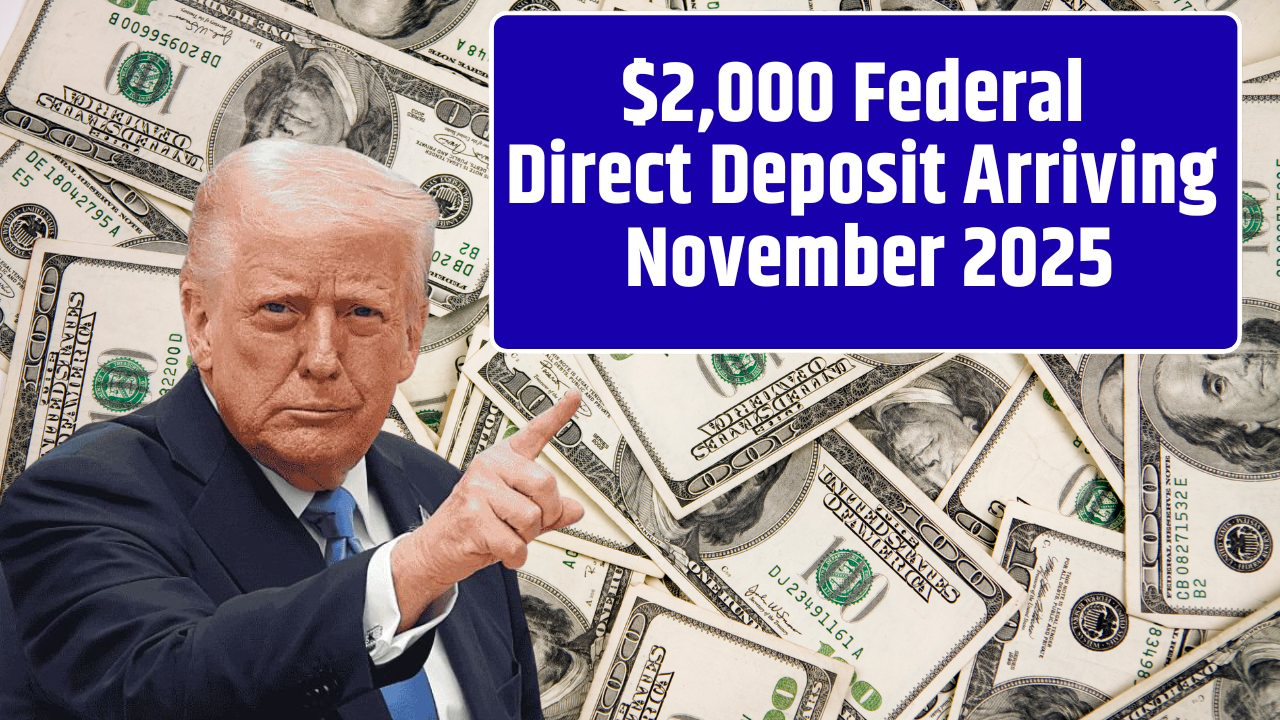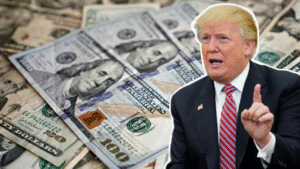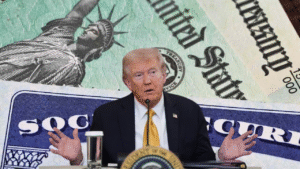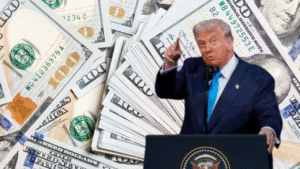By mid-October 2025, many Americans noticed a pleasant surprise in their bank accounts: a $2,000 direct deposit labeled as a federal payment from the U.S. Department of the Treasury. While it might look like another round of stimulus checks, this one-time relief comes from a new effort — the Federal Inflation Adjustment Initiative, designed to help working- and middle-class families manage persistent inflation pressures as 2025 comes to an end.
What Is the Federal Inflation Adjustment Initiative?
Introduced earlier in 2025, this initiative is part of a targeted economic relief package distinct from previous pandemic-era programs. Unlike the broad stimulus payments of 2020–2021, this effort is meant for households hit hardest by rising prices on essentials such as food, housing, and healthcare — all of which remain nearly 17% higher than pre-pandemic levels, according to the U.S. Bureau of Labor Statistics.
According to the Treasury and the Internal Revenue Service (IRS), this is a “bridge payment” — a temporary relief designed to stabilize household budgets while wages and economic conditions continue to adjust. Treasury officials describe it as a “practical cushion,” not a long-term stimulus.
Who Qualifies for the $2,000 Federal Payment
Eligibility for the Federal Inflation Adjustment Initiative is automatic and based on your 2024 federal tax return:
- Single filers with an Adjusted Gross Income (AGI) below $70,000 qualify for the full $2,000.
- Joint filers with an AGI under $150,000 also qualify for the full amount.
- Payments phase out gradually for higher earners, with reduced benefits for those near the upper income limit.
No separate application or registration is needed. The IRS uses existing tax data and distributes the payment through the same method you received your most recent tax refund — typically direct deposit, paper check, or prepaid debit card.
When and How Payments Are Sent
The IRS began issuing direct deposits on November 15, 2025, with most recipients expected to see funds by November 25. Those without direct deposit on file will receive paper checks or debit cards starting in early November.
To check your payment status safely, use these verified IRS tools:
- Get My Payment – Check if your deposit has been processed or scheduled.
- Where’s My Refund – Track delivery or mailing status.
You’ll need your Social Security Number (SSN) or Individual Taxpayer Identification Number (ITIN), filing status, and refund amount for verification.
If you haven’t received your payment by late November, you can claim it as a Recovery Rebate Credit on your 2025 tax return, similar to earlier stimulus adjustments.
Why the $2,000 Payment Matters
For millions of Americans, $2,000 can go a long way — covering rent, groceries, or utility bills during the holiday season. For retirees, single parents, or individuals on fixed incomes, it’s a vital boost amid ongoing economic strain.
Beyond the financial value, it also restores confidence that the federal government can deliver timely, practical aid in response to inflation-driven hardship.
Economic Impact and Debate
Economists remain divided on the long-term effects. Supporters argue the targeted approach provides direct relief to families most affected by rising costs without overheating the economy. Critics, however, worry that any large-scale cash injection could reignite inflationary pressures, particularly as the Federal Reserve continues to combat price growth.
Core inflation — excluding food and energy — remains above the Fed’s 2% target, with housing, healthcare, and energy costs still climbing. The payment, though limited, reflects ongoing efforts to balance inflation control with consumer relief.
Protect Yourself from Scams
Whenever federal payments roll out, scammers try to take advantage of public anticipation. The IRS warns that it never contacts taxpayers via text, email, or phone to request personal or banking information.
If you receive messages asking to “verify” your payment or click a link, do not respond. Report suspicious communication to [email protected] or visit the IRS’s Report Phishing and Online Scams page.
If your banking information has changed since you filed your 2024 taxes, don’t worry — the IRS will automatically mail your payment instead. There is no way to update details at this stage.
The Bottom Line
The Federal Inflation Adjustment Initiative is not a new stimulus program, but a one-time $2,000 payment aimed at helping households weather continued inflation. It won’t fix every financial challenge, but for millions of Americans, it’s timely support at a moment when budgets are stretched thin.
FAQs
Do I need to apply for the $2,000 payment?
No. Payments are automatic based on your 2024 tax return.
When will I receive my payment?
Direct deposits are processed between November 15–25, 2025. Paper checks and debit cards are mailed in early November.
What if I don’t receive my payment?
You can claim it as a Recovery Rebate Credit on your 2025 tax return.
Will this payment affect my tax refund?
No. The $2,000 payment is not taxable income and will not reduce your 2025 refund.
How can I verify my payment status?
Use the Get My Payment or Where’s My Refund tools on the IRS website. Never click links in unsolicited emails or texts.



